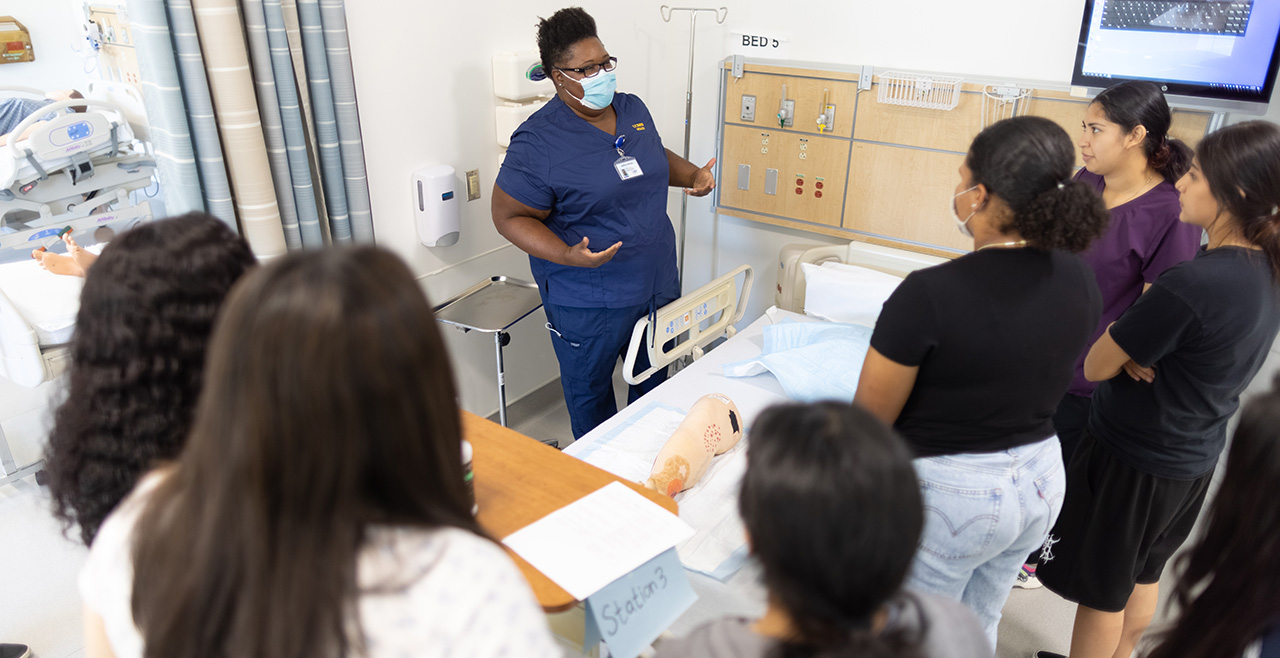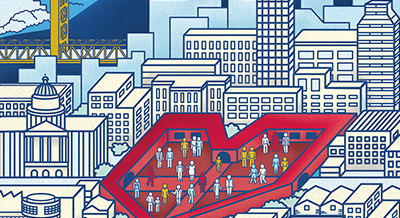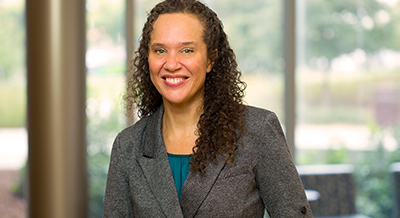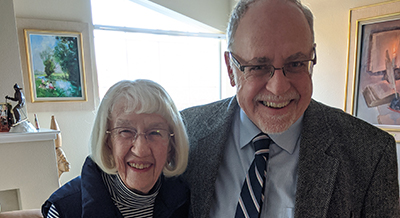What do you want to be when you grow up?
For many students of color, the answer may not be a future in health care. If no one in their family has ever been a nurse or a doctor, they may not realize how the profession could be for them or understand the path to achieving that goal. Sheree Criner, an African American registered nurse, knows that all too well.
“I never really had a mentor to help me realize that with my passion to help others and my strength in science I could become a successful nurse leader,” says Criner, a master’s-degree leadership alumna from the Betty Irene Moore School of Nursing at UC Davis. “If I had a better education plan, I would have had a more focused trajectory.”
From serving as a certified nursing assistant and a licensed vocational nurse, to completing an associate degree and bachelor’s degree in nursing, and finally a master’s degree in leadership, Criner says she took the “long way” in her education.
“Our nation’s health professions have not kept pace with changing demographics. The result in greater health disparities and poorer outcomes,” explains Piri Ackerman-Barger, associate dean for Health Equity, Diversity and Inclusion.
Ackerman-Barger says students, like Criner, who is currently the director of Surgical Specialties at Kaiser Permanente South Sacramento, illustrate the great achievements that are possible when ambition, talent and drive are nurtured early in the educational process.
So, she created a new program to reach out to students from underrepresented areas and identify future nurses who may not see themselves in the profession yet. The Summer Health Institute for Nursing Exploration and Success (SHINES) program hosted its first group of students this summer. For two weeks in July, 38 16- and 17-year-olds from Sacramento-area high schools learned about whether nursing is a right fit for them. From how to make professional and academic decisions to what nursing pathways would suit their needs, the program focuses on success in their academic aspirations.
“We think the earlier young people see themselves as capable and valuable to the health care profession, the sooner they’ll make the steps to prepare what they need to go to get there,” Ackerman- Barger says.
The National Academy of Medicine’s “The Future of Nursing 2020–2030: Charting a Path to Achieve Health Equity” offers a road map for how nurses can work to reduce health disparities and promote equity. One way to dismantle systemic racism and improve health inequities is to develop a nursing workforce that mirrors the diversity of the population.
“I believe deeply that education is a key piece in diversifying our nursing staff and the way to achieve that is through inspiring high school students,” says Patricia Fernandez, SHINES co-director and Doctor of Philosophy student at the school. “They are our future. This is just the perfect opportunity to bring students together and get them excited about becoming a nurse.”
SHINES aims to do just that not just by painting a nursing pathway, but also by fostering identity formation in the form of students’ confidence, self-efficacy and a sense of the value they bring.
“That just really inspired me and made me like feel more comfortable and confident in like my journey to becoming a nurse,” says Anointed Amasowomwan, a student at Consumnes River College. “We need more diversity in the medical field that I feel like I could bring in.”
Participant Levert Bryant decided to apply to the program because he, too, wants to go into health care.
“I thought this was a chance to get me introduced to it, to go through the different aspects of it,” the Sacramento Charter High School student explains. “And it doesn’t hurt to always try something new.”
Ackerman-Barger credits overwhelming volunteer support and donor investment for the inaugural launch of the program. This year’s partners included several School of Nursing alumni, Cristo Rey High School, Arthur A. Benjamin Health Professions High School, St. HOPE Academy and Improve your Tomorrow. Thanks to involvement and investments from UC Davis Medical Center nursing leadership and School of Nursing donors, students receive a $500 completion stipend and a $200 wardrobe allowance to put their best foot forward.
“Philanthropic support will be the determining factor of the success and growth of SHINES,” Ackerman-Barger says. “The greater generosity of donors and grantors, the more students we can inspire and the greater impact we will ultimately have.”
The experience culminated with the Breaking Down Barriers conference. It was hosted by the school, along with the Capitol City Black Nurses Association (CCBNA) and the local chapter of the National Association of Hispanic Nurses (NAHN), both organizations that were founded and are led by School of Nursing alumni. Alumni, like Criner.
“A program like SHINES would’ve meant the world to me and I’m honored to be working with Dr. Ackerman-Barger to pay it forward for the next generation,” Criner says. “I now know how invaluable representation, influence and having role models correlate with self-actualization. I see, therefore I can be.”
Ackerman-Barger and school leaders argue that diversifying health care and academia are critical to reducing longstanding health disparities and crucial for the health care system to reflect a more representative field of practitioners, researchers and public health leaders.
“Really what I want our students to do is to shine,” she says. “This is their opportunity to do that.”






